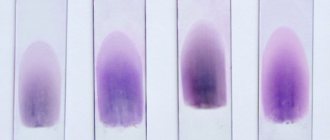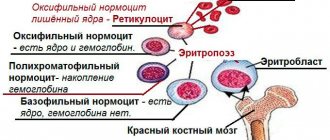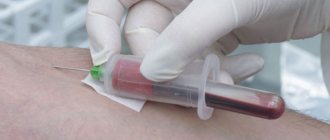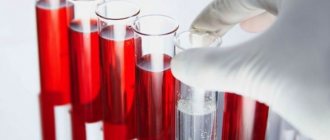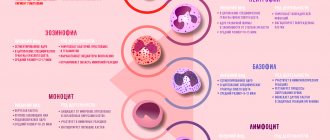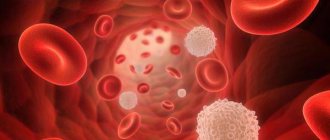Blood is taken from a finger prick to perform a complete blood count (CBC), also called a clinical test. The analysis allows you to evaluate the quantitative composition of blood cells, and is also used for rapid determination of glucose and cholesterol levels. CBC is a simple and quick laboratory diagnostic procedure. It is prescribed in the following cases:
- preventive examinations (all adults are recommended to donate blood from a finger prick once a year), obtaining certificates for admission to kindergarten, school, sports clubs, hiring commission;
- examination before hospitalization, surgery, examination and observation of women registered for pregnancy;
- assessment of the body's condition before vaccination;
- initial diagnosis of various diseases, including asymptomatic ones;
- diagnosis and treatment prescription for acute diseases;
- to monitor the condition of patients during treatment;
- routine examination of people with chronic diseases.
When studying capillary blood, which is taken from a finger, the number of blood cells is determined - red blood cells, leukocytes, platelets, leukocyte formula (percentage ratio of various forms of leukocytes), the level of hemoglobin, glucose, cholesterol, erythrocyte sedimentation rate (ESR).
Deviation from the norm indicates pathological conditions: for example, a reduced number of red blood cells indicates anemia, an increased percentage of leukocytes and accelerated ESR indicate inflammation, eosinophils indicate allergic reactions, helminthic infestations. However, these conditions are not diagnoses - they can be present in various diseases. Only a doctor should interpret the test result, make a diagnosis and prescribe treatment.
Preparation rules
- To donate blood from a finger prick, you need to come to the laboratory in the morning (usually collection occurs from 7.30 to 10 o’clock).
- The test must be taken on an empty stomach, that is, you cannot eat in the morning, you can only drink plain water. The last meal should take place the night before - no later than 8-12 hours before the procedure.
- You can eat a day earlier, but it is recommended that a day or two before the analysis, in order to avoid getting distorted results, you should avoid fatty foods and alcoholic beverages.
- The day before, you should avoid physical and emotional stress.
- In the morning before the procedure, you should refrain from smoking.
How to take a blood sugar test correctly
To ensure that the test results do not turn out to be false, it is necessary to follow some rules for preparing the patient for a blood sugar test. Otherwise, you may need to retake the test (which is a waste of your time and money), or an incorrect diagnosis and treatment may be prescribed.
Is it possible to drink water before testing for sugar?
You can drink water. But no more - it is necessary to exclude alcoholic drinks and drinks containing sugar and sweeteners.
Preparing for a glucose test
- On an empty stomach. 8-hour or better 12-hour fasting. Drink only water. Alcohol (it is better to exclude it for 102 days) and sweet drinks are strictly prohibited.
- Better get a good night's sleep
- Avoid intense mental work, stress and outbursts of emotions. The body can increase blood glucose levels during stressful situations. Excessive emotions can suppress insulin production.
- It is better not to brush your teeth with sugar-containing toothpaste.
- No smoking. (if you have diabetes, it is better to avoid smoking altogether)
- Be careful when taking medications. If it is necessary to treat acute or chronic episodes of the disease, you should warn the doctor about the existing problems and reschedule the study or interpret its results in accordance with the ability of some drugs to increase or decrease the studied parameters
- During the period of colds or other acute infections, the result may be false positive
- On the eve of the analysis, you should not take part in feasts, eat heavily before bed, drink alcohol, indulge in fatty foods, fast food, etc.
- Immediately after therapeutic procedures and serious examinations (massage, ultrasound, x-rays, physical therapy), you cannot take a sugar test.
- The day before and before donating blood for sugar, it is better not to engage in active sports. It is better to spend the day and morning before the analysis in a normal, calm manner.
What not to eat before a sugar test
- fatty and spicy foods;
- sweets, cakes and other sweet treats;
- packaged juices;
- sweet sparkling water;
- fast food.
What then can you eat before testing for sugar?
If you need to prepare for a blood glucose test but are feeling hungry, eat something light and healthy. For example:
- boiled/baked chicken
- green vegetables
- cereals
Is it possible to brush your teeth before donating blood for sugar?
It is not recommended to brush your teeth before the examination, because... Toothpastes contain sugar, which is well absorbed through the mucous membrane of the oral cavity and can affect the accuracy of the analysis. Avoid chewing gum as well.
Preparing for a blood sugar test during pregnancy
Preparing for a glucose tolerance test for pregnant women does not differ from the measures listed above. It is recommended to do a glucose tolerance test at 24-28 weeks.
Typically, such a test is prescribed for pregnant women to prevent excessive weight gain in the fetus, which can be caused by an increase in maternal blood sugar levels. And this can happen even if you've never had diabetes. After all, the heavy loads that the body experiences when carrying a fetus can reveal some pathologies that appear exclusively while expecting a baby. These diseases include diabetes mellitus.
Return to list
General analysis
It can be shortened or expanded. The first option includes indicators such as the level of hemoglobin and all blood cells (erythrocytes, platelets, leukocytes), as well as ESR (erythrocyte sedimentation rate).
Capillary blood collection from a child
In a detailed analysis, other indicators are added, including:
- hematocrit;
- width of red cell distribution;
- average erythrocyte volume;
- average content of hemoglobin in the red cell;
- leukocyte formula and others.
Factor No. 9. Drugs/medicines
Medicines and their metabolites can change OAC parameters due to a physicochemical effect on the procedure or due to their interaction with the device and reagents.
If the patient takes medications, especially in large dosages, such as antipyretics, analgesics, antibiotics, antispasmodics, it is necessary to take into account the effect of their metabolites on blood pH. The more medications a patient takes immediately before donating blood, the higher the likelihood of distorting the result. In addition, the presence of active metabolites significantly reduces the standardized time available for analysis. For UAC, the optimal execution time is considered to be 2 hours, within which the material remains as stable as possible. For CBC calculated on a hematology analyzer, this time is 6 hours. For OAC, if the patient has taken a large amount of medications, the time can be reduced to 30 minutes for any type of study.
Life-saving medications should be taken as usual! Their presence in the blood is the basic state from which dynamics are assessed.
How it affects: When a blood test with drug metabolites is carried out later than the established time interval, the volume of leukocytes changes, the volume of erythrocytes increases, which leads to errors in the morphological differentiation of leukocytes and calculated erythrocyte indices.
The platelet count when taking antiplatelet agents (NSAIDs, acetylsalicylic acid) may be underestimated by the analyzer. Falsely elevated MCV index can occur with hyperglycemia and ketoacidosis due to plasma hyperosmolarity.
If there is an excess of medicinal metabolites in the blood, the morphological characteristics of neutrophils and monocytes will change, the volumes will decrease and the form of other elements of the blood test will change. In practically healthy people, changing the basic parameters of cells will not cause significant changes in the count. The state of pathological elements in severe diseases cannot be standardized; the only requirement is to minimize the time before starting the analysis.
Tools
Many people are concerned about their own safety during the test, so they may have questions about what is used to pierce and take blood. Today, almost all medical institutions have switched to using disposable finger pricking instruments. This tool is called a scarifier. It must be removed from the unopened package in front of the patient. It should be said that such a puncture is quite painful, so children really do not like the procedure.
Today, donating blood can be painless. A new device is being used more and more often when blood is taken. This is an automatic lancet in a plastic case. The needle quickly penetrates the skin, so pain is not felt. The new lancets have many advantages:
- the sterile needle or blade is located inside the body, which ensures the safety of patients and medical personnel;
- the reliability of the trigger mechanism eliminates accidental release of the needle or blade;
- reuse is eliminated thanks to the automatic return of the needle or blade;
- the shape of the needle ensures a reduced pain effect;
- the puncture is targeted, its depth is controlled;
- convenient body shape.
The doctor ordered a fructosamine test. What kind of research is this?
This substance is a combination of plasma proteins with glucose; it gives the doctor information about the level of glycemia over the last 2-3 weeks.
- Blood is taken for analysis after an 8-hour fast and the normal value is 319 mmol/l.
This analysis is considered a “safety net” for glycated hemoglobin in cases where its information content is reduced, for example, in anemia. And also in cases where you need to assess the recent dynamics of blood sugar levels in recent weeks - during pregnancy in diabetic women, as well as a recent change in the diabetes treatment regimen.
Fence algorithm
To work, the laboratory assistant must prepare:
- sterile scarifier;
- cotton wool;
- alcohol;
- tincture of iodine;
- ether.
Disposable scarifier - a tool for pricking a finger
The algorithm and technique for taking are as follows:
- The patient sits opposite the laboratory assistant. The hand (usually the left) lies on the table.
- The puncture site is disinfected with alcohol and degreased with ether.
- Using a disposable scarifier, a puncture is quickly made in the pad of the ring finger, immersing the tool to the full depth of the cutting part (approximately 2-3 mm).
- The first drop of blood is removed using dry cotton wool.
- For the study, use the second and subsequent drops of blood, which are collected using a glass adapter, then placed in test tubes and signed.
- After the blood has been taken, the injection site is treated with alcohol or iodine and clamped with a cotton swab until the blood stops completely.
The algorithm for collecting capillary blood from a child is exactly the same as from an adult.
Research method
The research method depends on the required parameters of the hemogram.
In manual mode, part of a blood sample (3–5 ml) is taken into a capillary to determine ESR, part of the blood sample is used to determine hemoglobin, a drop of blood is used to prepare a smear and further calculate the leukocyte formula. A separate amount of blood is required to prepare a smear and count platelets, and part of the blood sample is needed to study the number of red blood cells and, separately, reticulocytes. In manual mode, if staining and visual assessment of the smear are necessary, the result of a detailed hemogram of a patient in a multi-bed hospital can be obtained at the end of the working day or later.
In automated cell counting and evaluation of different populations, 150 to 300 μl of blood and 100 μl are required for ESR determination. Automatic testing is based on the impedance method of Coulter (1956), which is based on the principle of closing an electrical circuit with each cell successively passing through the sampler aperture. Subsequently, the automated counting method received a number of improvements; in modern analyzers, each cell is assessed according to several parameters: conductivity, light scattering, size, the presence of CD markers on the surface, and, accordingly, membership in different populations. The number of parameters is determined by the device model.
Automatic testing allows you to identify pathological samples that must be visually reviewed by a laboratory diagnostic specialist. Visual control of the hemogram involves preparing a blood smear or slide, which can be made from a drop of blood from an already taken sample, both manually and automatically. Automated blood smear preparation is preferable because There is a uniform distribution of the blood drop and standardized staining. Visual microscopy of the smear is carried out in five fields of view.
An automatic blood test takes 3–5 minutes, unless additional smear preparation and ESR testing are required.
Why from the ring finger?
Perhaps someone is interested in which finger the blood is taken from and why. The sampling occurs from the ring finger, although it is allowed from the middle or index finger. A puncture, like any violation of the integrity of the skin, can lead to infection. The ring, index and middle fingers have an isolated inner membrane, so if penetration occurs, the infection will first be localized, which means there is time to eliminate it. The thumb and little finger are directly connected to the lining of the hand, and when infected, the infection spreads to the entire hand. The choice of the ring finger is explained by the fact that it bears the least physical load.
Factor #10: Time
The general rule for transporting any biological material is delivery to the laboratory as soon as possible.
How it affects: In addition to changing the morphology of cells, the delivery time can change quantitative indicators, especially if the temperature regime has been violated: an increase in blood viscosity when it is cooled during storage or transportation, the presence of microclots due to poor mixing with the anticoagulant immediately after blood collection. The most sensitive indicator is red blood cells: their number will be falsely underestimated.
What does the analysis show?
Taking blood from a finger is taken for preventive purposes, for diagnosis and treatment monitoring. This is a basic examination, and the main, most necessary characteristics for doctors that blood shows are the following:
- hemoglobin level;
- red blood cell level;
- ESR;
- leukocyte level;
- relative content of lymphocytes, monocytes, neutrophils, basophils, eosinophils.
Blood collection using an automatic lancet
Using clinical analysis, doctors can diagnose the following pathological conditions:
- leukemia;
- anemia;
- bleeding disorders;
- the presence of an infectious or inflammatory process in the body.
Factor No. 5. It's in vitro...
For blood collection, it is better to use vacuum tubes of a standardized volume, since this will avoid damage to the formed elements, especially red blood cells. In practice, when a laboratory switches from one type of tube to another, the CBC results may be distorted, which does not depend on the patient’s underlying disease.
How it affects: It is possible to change the hemoglobin amount indicator (both towards overestimation and towards underestimation), as well as the associated calculated indices (MCH, MCHC).
Three reasons for patient-related variability in CBC results:
- Biological variation: interindividual (race, gender, age) and intraindividual (biorhythms, pregnancy, diet, physical activity, alcohol consumption, smoking);
- External conditions (climate, atmospheric pressure, stress, drugs, medications);
- A change in body position (transition from a lying position to a sitting or standing position) leads to hydrostatic penetration of water and filtered substances from the intravascular space into the interstitial space. It is possible to increase the concentration of hemoglobin, hematocrit, and the number of leukocytes.
Interpretation of results
Deciphering should be carried out only by the attending physician. You should not try to do this yourself based on tables that indicate the norm for each indicator. The doctor evaluates the main parameters not only individually, but also in aggregate.
- Hemoglobin level. The norm for women is 120-140 g/liter, for men – 130-160 g/liter. If the content is higher than normal, dehydration, intestinal infections, and congenital heart disease are possible. A low level indicates anemia.
- CPU (color index). The norm is from 0.85 to 1.15%. Low values indicate anemia; elevated values are observed with folic acid deficiency and stomach cancer.
- Red blood cells. The norm for men is 4-5 g/l, for women – 3.7-4.7 g/l. An increase in level indicates renal pathologies, tumors, Cushing's syndrome. A slight excess of the norm can be observed with diarrhea, taking diuretics, and burns. Low levels indicate anemia, overhydration, and blood loss.
- ESR. The red cell sedimentation rate is an indicator of the level of plasma proteins. Normally, in women – up to 20 mm/hour, in men – up to 15 mm/hour. A high level is typical for inflammatory processes, infections, autoimmune diseases, intoxication, endocrine, renal and hepatic pathologies, and oncology. The reasons for the decrease are circulatory failure, hyperbilirubinemia, erythremia.
- Leukocytes. The norm of white cells is 4-9X10⁹/liter. The reasons for the decrease are cancer with secondary tumors in the brain, diffuse connective tissue diseases, typhoid fever, viral hepatitis, leukemia. Increased levels are observed in bacterial and fungal infections, acute inflammation, purulent infections, pneumonia, otitis media, pancreatitis, bronchitis, meningitis, and so on.
- Platelets. The normal content of blood platelets responsible for blood clotting is 180-320X10⁹/liter. High platelet counts indicate the development of rheumatoid arthritis, polycythemia, tuberculosis, and myeloid leukemia. A reduced content accompanies thrombocytopenic purpura, aplastic and hemolytic anemia, hemolytic disease, and lupus erythematosus.
What does a urine glucose test indicate?
- Normally, sugar is absent in the urine or is excreted in the urine in minimal quantities (less than 0.8 mmol/l), since all glucose is reabsorbed from the primary urine in the renal tubules.
- Glucose penetrates into the urine only when its concentration in the blood exceeds 10 mmol/l.
Mild glucosuria may occur during pregnancy. In addition to various types of diabetes (mellitus, renal, steroid), glucose in the urine can appear in myocardial infarction and ischemic stroke of the brain, polytrauma, prolonged compartment syndrome and massive burns. Most of these conditions are critical care and do not require routine testing on an outpatient basis.
Urogenital urethral smear in men
- For 2 weeks before the study, exclude the local use of antiseptics and/or antibacterial and antifungal drugs.
- For 3 hours before the examination, refrain from urinating and do not toilet the external genitalia.
- It is recommended to analyze a urogenital smear in a man no earlier than 2 weeks after taking antibacterial drugs.
- In men with urethral discharge, the surface of the glans and the external urethral meatus should be cleaned with a gauze pad and the foreskin pulled back to prevent contamination.
